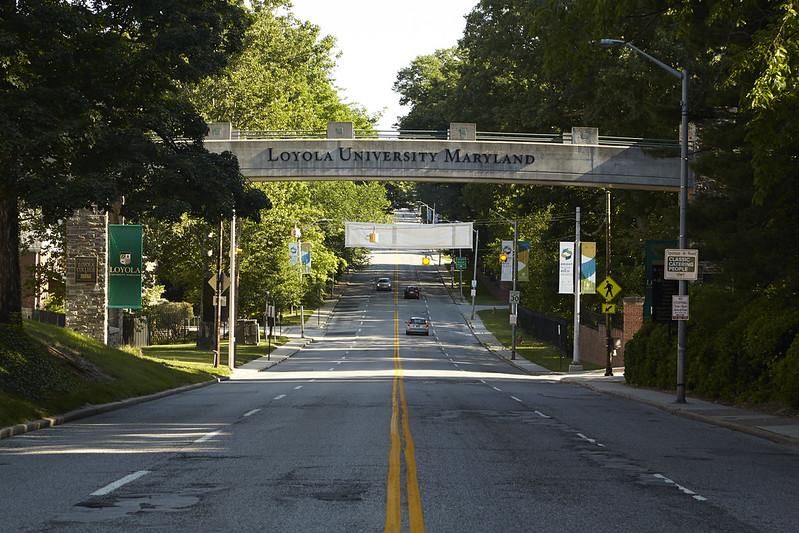I’m a huge fan of Loyola’s new dining services. The “all-you-care-to-eat” option on nights and weekends is fantastic. As an upperclassman who went with the minimum number of declining dollars, I originally balked at the sticker price of $11 to eat in Boulder on a Tuesday night, but it’s not difficult to get your money’s worth. Eleven dollars barely filled you up with last year’s à la carte options.
But as we find ourselves drifting into food coma happiness after the first week’s worth of trips to the new Boulder, let’s not forget the high cost of delicious food and full bellies. I write in with these remarks not looking to criticize the women and men who worked very hard to bring about the new gastronomic reality on our campus—hardworking people like Jennifer Wood, Director of Campus Services, as well as the entire Loyola Dining team—but simply to start a conversation about the actual cost of the new system compared to other institutions.
In the spring, the Greyhound published a chart depicting the cost of Loyola’s meal plan as compared to nine other institutions. These nine other institutions are the same institutions that Loyola decided to begin comparing itself to in the 2008-2013 Strategic Plan. They are Creighton University, Fairfield University, Gonzaga University, Loyola Marymount University, Providence College, Saint Joseph’s University (PA), Santa Clara University, Villanova University, and Xavier University. Loyola’s “Key Indicators of Success” have been measured against these universities for years.
This chart made it appear that Loyola’s dining plan is the cheapest of the ten sister institutions. However, students rarely compare dining plans from institution to institution, but rather compare the cost of Room and Board together. Students often combine this cost with tuition as well. Rather than simply comparing the cost of meal plans from school to school, let’s take a look at some of these combined costs. I’ll look first at the cost for first-year students and then the costs for all other students.
Although the cost of Loyola’s best meal plan for first-year students is the cheapest out of all these comparable institutions, the cost of Loyola’s housing for first-year students is the highest. When these two costs are combined, Loyola and three other schools break $13,000 in combined Room and Board costs. SJU has the highest Room and Board, but Loyola’s is only $500 cheaper. The cost of Room and Board at the other six schools is sometimes less than $10,000, like at Creighton and Gonzaga. Loyola University Maryland also has the third-highest total sticker price (including tuition) of these ten schools: over $55,000. Villanova’s tuition, the highest, is about $1,500 more than Loyola’s. Xavier, Creighton, and Gonzaga all have total costs that are under $44,000 before fees. (Fees are difficult to compare between institutions and so were excluded from these estimated totals. Most schools charge fees of around $1,000 for first-year students.) When we look at combined costs in this manner, we see that Loyola is near the top of the list. The low cost of our meal plan is deceptive.
When it comes to sophomores, juniors, and seniors, the cost of living in an apartment at Loyola University Maryland falls somewhere within the middle of the pack, even with the required minimum amount that Loyola upperclassmen are required to pay into the dining plan. Creighton and Gonzaga again have the lowest costs for an apartment: below $7,000. But some schools have apartments and suites that are higher in cost than Loyola’s and also require sophomores (but not juniors or seniors) to pay into the dining plan. No school other than Loyola requires upperclassmen who have an on-campus kitchen to pay into the dining program. We can determine from these numbers that Loyola’s Room and Board for upperclassmen, especially considering the quality of our on-campus housing, is not significantly different from a number of the comparable schools. Still, Loyola’s total required cost (Tuition, Room and Board) for upperclassmen living in on-campus apartments is lower only than Fairfield’s and Santa Clara’s. (Santa Clara’s cost, like Loyola’s, includes a limited number of meals.)
By taking into account the cost not only of dining, but also of housing and tuition, we find that Loyola’s costs are far from the cheapest in this list of ten sister institutions. The full cost of attending Loyola University Maryland is always in the top half of this list, and sometimes quite close to the top.
The 2008-2013 Strategic Plan is complete, and on almost all fronts it seems to have been a shining success. The next plan is in the works. I hope that the Loyola community can begin to have a conversation about what a Jesuit university needs to do to further attract a geographically and socioeconomically diverse student body, which were two of its goals in the last plan. We have a much more diverse student population than we did five years ago, but there is always room for progress. I know that Loyola has made a number of honorable budget cuts in order to keep tuition costs from rising over the past few years, and I can’t express enough my appreciation for that. But as delicious as this first week in Boulder has been, I don’t think that having one of the highest costs of Room and Board (among the ten comparable institutions) is going to help us attract the diversity for which we strive. Gonzaga, Creighton, and Xavier are not in the world’s most exciting locales, but provide a comparable education (by Loyola’s own standards) at a lower cost.
And at the risk of using a word heard all too often on our campus (but perhaps not taken to heart enough), the high “cost of living” at Loyola—and at other Jesuit universities—is perhaps also a matter of justice. I’m well aware that few Loyola students pay the sticker price of combined Tuition, Room, and Board. But is Loyola able to provide more financial aid to incoming first-years to help them cover the costs of the new meal plan? And what about transfer students, who may have spent time at a less expensive institution to save money, but are now required to purchase a hefty meal plan when they arrive? Or do the new costs of attending Loyola affect lower-income students more than students who can afford the higher cost of living? And if more financial aid is provided, is it anything more than students loans? Loans only lower the cost of attending Loyola while a student is enrolled—unlike with a grant or scholarship, those costs reappear for a student later in life. I don’t know the answer to these questions, but I hope it’s a conversation that we can begin. It might take a lot of brainpower, but I know just the place where we can refuel.
(Note: I’m no expert at crunching numbers, but I did try my best. Any mistakes made while attempting to understand other universities’ esoteric dining plans are completely my own.)
Tommy O’Donnell
Class of 2015











































































































